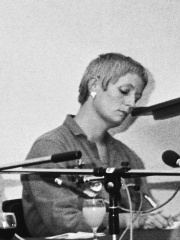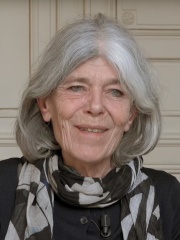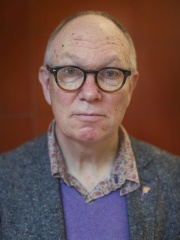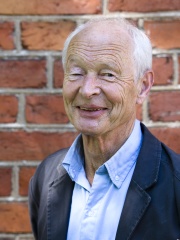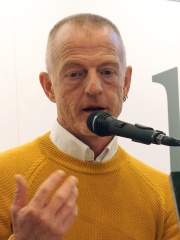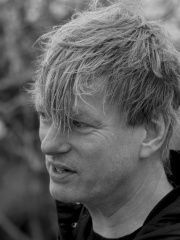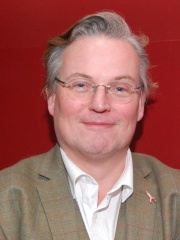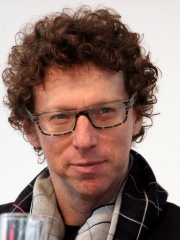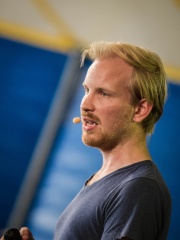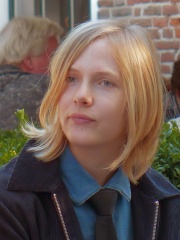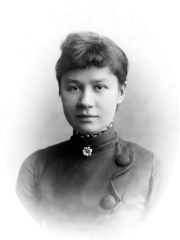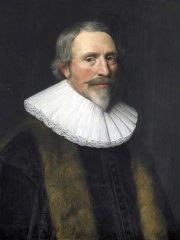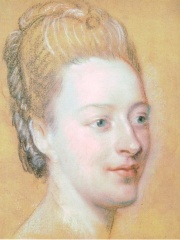
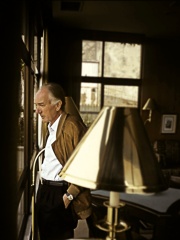
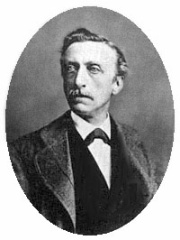
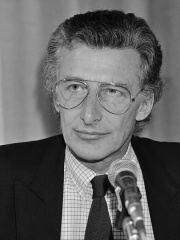
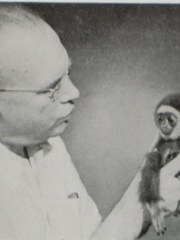

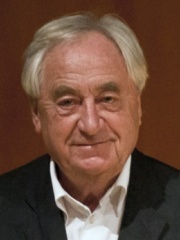
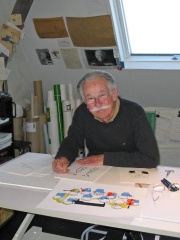
The Most Famous
WRITERS from Netherlands
This page contains a list of the greatest Dutch Writers. The pantheon dataset contains 7,302 Writers, 65 of which were born in Netherlands. This makes Netherlands the birth place of the 20th most number of Writers behind Austria, and Hungary.
Top 10
The following people are considered by Pantheon to be the top 10 most legendary Dutch Writers of all time. This list of famous Dutch Writers is sorted by HPI (Historical Popularity Index), a metric that aggregates information on a biography's online popularity. Visit the rankings page to view the entire list of Dutch Writers.

1. Isabelle de Charrière (1740 - 1805)
With an HPI of 73.62, Isabelle de Charrière is the most famous Dutch Writer. Her biography has been translated into 83 different languages on wikipedia.
Isabelle de Charrière (French: [izabɛl də ʃaʁjɛʁ]; née Isabella Agneta Elisabeth van Tuyll van Serooskerken; 20 October 1740 – 27 December 1805), also known as Madame de Charrière and in the Netherlands as Belle van Zuylen (Dutch: [ˈbɛlə vɑn ˈzœylə(n)]), was a Dutch and Swiss writer of the Enlightenment who lived the latter half of her life in Colombier, Neuchâtel, Switzerland. She is now best known for her letters and novels, although she also wrote pamphlets, music and plays. She took a keen interest in the society and politics of her age, and her work around the time of the French Revolution is regarded as being of particular interest.

2. Thomas Bernhard (1931 - 1989)
With an HPI of 73.28, Thomas Bernhard is the 2nd most famous Dutch Writer. His biography has been translated into 49 different languages.
Nicolaas Thomas Bernhard (German: [ˈtoːmas ˈbɛʁnhaʁt]; 9 February 1931 – 12 February 1989) was an Austrian novelist, playwright, poet and polemicist who is considered one of the most important German-language authors of the postwar era. He explored themes of death, isolation, obsession and illness in controversial literature that was pessimistic about the human condition and highly critical of post-war Austrian and European culture. He developed a distinctive prose style often featuring multiple perspectives on characters and events, idiosyncratic vocabulary and punctuation, and long monologues by protagonists on the verge of insanity. Born in the Netherlands to his unwed Austrian mother, for much of his childhood he lived with his maternal grandparents in Austria and in boarding homes in Austria and Nazi Germany. He was closest to his grandfather, the novelist Johannes Freumbichler, who introduced him to literature and philosophy. As a youth, he contracted pleurisy and tuberculosis and lived with debilitating lung disease for the rest of his life. While recovering in a sanatorium he began writing poetry and stories and met Hedwig Stavianicek, a wealthy heiress who supported his literary ambitions and whom he later described as the most important person in his life. After his breakthrough novel Frost (1963), he established himself over the next 20 years as a leading novelist and playwright in German. His major works include the novels Correction (1975) and Extinction (1986) and his memoirs Gathering Evidence (1975–82). George Steiner called him "at his best, the foremost craftsman of German prose after Kafka and Musil". He influenced the Austrian vernacular and a younger generation of Austrian writers including Elfriede Jelinek. Bernhard was controversial in Austria for his public polemics against what he saw as his homeland's post-war cultural pretensions, antisemitism, provincialism, and denial of its Nazi past. While critics labelled him a Nestbeschmutzer (one who fouls his own nest), he described himself as a troublemaker. He died of heart failure in his apartment in Gmunden, Upper Austria, in February 1989. Controversy extended beyond his death when it was revealed that his will sought to prohibit the publication or performance of his works in Austria for 70 years.

3. Multatuli (1820 - 1887)
With an HPI of 70.61, Multatuli is the 3rd most famous Dutch Writer. His biography has been translated into 46 different languages.
Eduard Douwes Dekker (2 March 1820 – 19 February 1887), better known by his pen name Multatuli (from Latin multa tulī, "I have suffered much"), was a Dutch writer best known for his satirical novel Max Havelaar (1860), which denounced the abuses of colonialism in the Dutch East Indies (today's Indonesia). He is considered one of the Netherlands' greatest authors.

4. Harry Mulisch (1927 - 2010)
With an HPI of 69.95, Harry Mulisch is the 4th most famous Dutch Writer. His biography has been translated into 72 different languages.
Harry Kurt Victor Mulisch (Dutch pronunciation: [ˈɦɑri ˈmulɪɕ]; 29 July 1927 – 30 October 2010) was a Dutch writer. He wrote more than 80 novels, plays, essays, poems, and philosophical reflections. Mulisch's works have been translated into 38 languages so far. Along with Willem Frederik Hermans and Gerard Reve, Mulisch is considered one of the "Great Three" (De Grote Drie) of Dutch postwar literature. His novel The Assault (1982) was adapted into a film that won both a Golden Globe and an Academy Award. Mulisch's work is also popular among the country's public: a 2007 poll of NRC Handelsblad readers voted his novel The Discovery of Heaven (1992) the greatest Dutch book ever written. He was regularly mentioned as a possible future Nobel laureate. He won the 2007 International Nonino Prize in Italy.
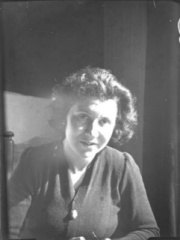
5. Etty Hillesum (1914 - 1943)
With an HPI of 68.65, Etty Hillesum is the 5th most famous Dutch Writer. Her biography has been translated into 21 different languages.
Esther "Etty" Hillesum (15 January 1914 – 30 November 1943) was a Dutch Jewish author of confessional letters and diaries which describe both her religious awakening and the persecutions of Jewish people in Amsterdam during the German occupation. In 1943, she was deported and murdered in the Auschwitz concentration camp.

6. Robert van Gulik (1910 - 1967)
With an HPI of 67.95, Robert van Gulik is the 6th most famous Dutch Writer. His biography has been translated into 25 different languages.
Robert Hans van Gulik (Chinese: 髙羅佩; pinyin: Gāo Luópèi, 9 August 1910 – 24 September 1967) was a Dutch orientalist, diplomat, musician (of the guqin), and writer, best known for the Judge Dee historical mysteries, the protagonist of which he borrowed from the 18th-century Chinese detective novel Dee Goong An.

7. Constantijn Huygens (1596 - 1687)
With an HPI of 66.34, Constantijn Huygens is the 7th most famous Dutch Writer. His biography has been translated into 25 different languages.
Sir Constantijn Huygens, Lord of Zuilichem ( HY-gənz, US also HOY-gənz, Dutch: [ˈkɔnstɑntɛin ˈɦœyɣə(n)s]; 4 September 1596 – 28 March 1687), was a Dutch Golden Age poet and composer. He was also secretary to two Princes of Orange: Frederick Henry and William II, and the father of the scientist Christiaan Huygens.

8. Cees Nooteboom (b. 1933)
With an HPI of 65.75, Cees Nooteboom is the 8th most famous Dutch Writer. His biography has been translated into 35 different languages.
Cornelis Johannes Jacobus Maria "Cees" Nooteboom (Dutch pronunciation: [seːs ˈnoːtəboːm]; born 31 July 1933) is a Dutch novelist, poet and journalist. After the attention received by his novel Rituals (Rituelen, 1980), which won the Pegasus Prize, it was the first of his novels to be translated into an English-language edition, published in 1983 by Louisiana State University Press (LSU Press) of the United States. LSU Press published his two earlier novels in English in the following years, as well as other works up until 1990. Harcourt (now Houghton Mifflin Harcourt) and Grove Press have since published some of his works in English. Nooteboom has won numerous literary awards and has been mentioned as a candidate for the Nobel Prize in literature.

9. Dick Bruna (1927 - 2017)
With an HPI of 64.79, Dick Bruna is the 9th most famous Dutch Writer. His biography has been translated into 31 different languages.
Dick Bruna (born Hendrik Magdalenus Bruna, 23 August 1927 – 16 February 2017) was a Dutch author, artist, illustrator and graphic designer. Bruna was best known for his children's books which he authored and illustrated, numbering over 200. His most notable creation was Miffy (Nijntje in the original Dutch), a small rabbit drawn with heavy graphic lines, simple shapes and primary colours. Bruna also created stories for characters such as Boris Bear, Poppy Pig, Snuffy, Lottie, Farmer John, Kitty Nelly, and Hettie Hedgehog. Aside from his prolific catalog of children's books, Bruna also illustrated and designed book covers, posters and promotional materials for his father's publishing company A.W. Bruna & Zoon. His most popular designs graced the covers of the Zwarte Beertjes (English, "little black bears") series of books. Well known among his designs are those for Simenon's Maigret books, typified by graphic silhouettes of a pipe on various backgrounds.
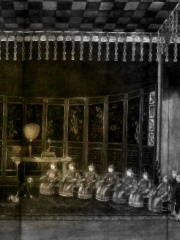
10. Isaac Titsingh (1745 - 1812)
With an HPI of 63.48, Isaac Titsingh is the 10th most famous Dutch Writer. His biography has been translated into 29 different languages.
Isaac Titsingh FRS (c. January 1745 – 2 February 1812) was a Dutch diplomat, historian, Japanologist, and merchant. During a long career in East Asia, Titsingh was a senior official of the Dutch East India Company (Dutch: Vereenigde Oostindische Compagnie (VOC)). He represented the European trading company in exclusive official contact with Tokugawa Japan, traveling to Edo twice for audiences with the shogun and other high officials of the shogunate. He was the Dutch and VOC governor general in Chinsura, Bengal. Titsingh worked with his counterpart, Charles Cornwallis, who was governor general of the British East India Company. In 1795, Titsingh represented Dutch and VOC interests in China, where his reception at the court of the Qing Qianlong Emperor stood in contrast to the rebuff suffered by British diplomat George Macartney's mission in 1793, just prior to celebrations of Qianlong's sixty-year reign. In China, Titsingh effectively functioned as ambassador for his country at the same time as he represented the Dutch East India Company as a trade representative.
People
Pantheon has 65 people classified as Dutch writers born between 1487 and 1991. Of these 65, 13 (20.00%) of them are still alive today. The most famous living Dutch writers include Cees Nooteboom, Tim Krabbé, and Mieke Bal. The most famous deceased Dutch writers include Isabelle de Charrière, Thomas Bernhard, and Multatuli.
Living Dutch Writers
Go to all RankingsCees Nooteboom
1933 - Present
HPI: 65.75
Tim Krabbé
1943 - Present
HPI: 60.23
Mieke Bal
1946 - Present
HPI: 56.29
Anna Enquist
1945 - Present
HPI: 56.13
Ian Buruma
1951 - Present
HPI: 53.95
Guus Kuijer
1942 - Present
HPI: 52.67
Gerbrand Bakker
1962 - Present
HPI: 50.52
Michel Faber
1960 - Present
HPI: 50.44
Jan van Steenbergen
1970 - Present
HPI: 47.74
Arnon Grunberg
1971 - Present
HPI: 47.21
Rutger Bregman
1988 - Present
HPI: 42.90
Marieke Lucas Rijneveld
1991 - Present
HPI: 40.99
Deceased Dutch Writers
Go to all RankingsIsabelle de Charrière
1740 - 1805
HPI: 73.62
Thomas Bernhard
1931 - 1989
HPI: 73.28
Multatuli
1820 - 1887
HPI: 70.61
Harry Mulisch
1927 - 2010
HPI: 69.95
Etty Hillesum
1914 - 1943
HPI: 68.65
Robert van Gulik
1910 - 1967
HPI: 67.95
Constantijn Huygens
1596 - 1687
HPI: 66.34
Dick Bruna
1927 - 2017
HPI: 64.79
Isaac Titsingh
1745 - 1812
HPI: 63.48
Johanna van Gogh-Bonger
1862 - 1925
HPI: 62.71
Cornelis Tromp
1629 - 1691
HPI: 61.97
Jacob Cats
1577 - 1660
HPI: 61.81
Overlapping Lives
Which Writers were alive at the same time? This visualization shows the lifespans of the 25 most globally memorable Writers since 1700.


